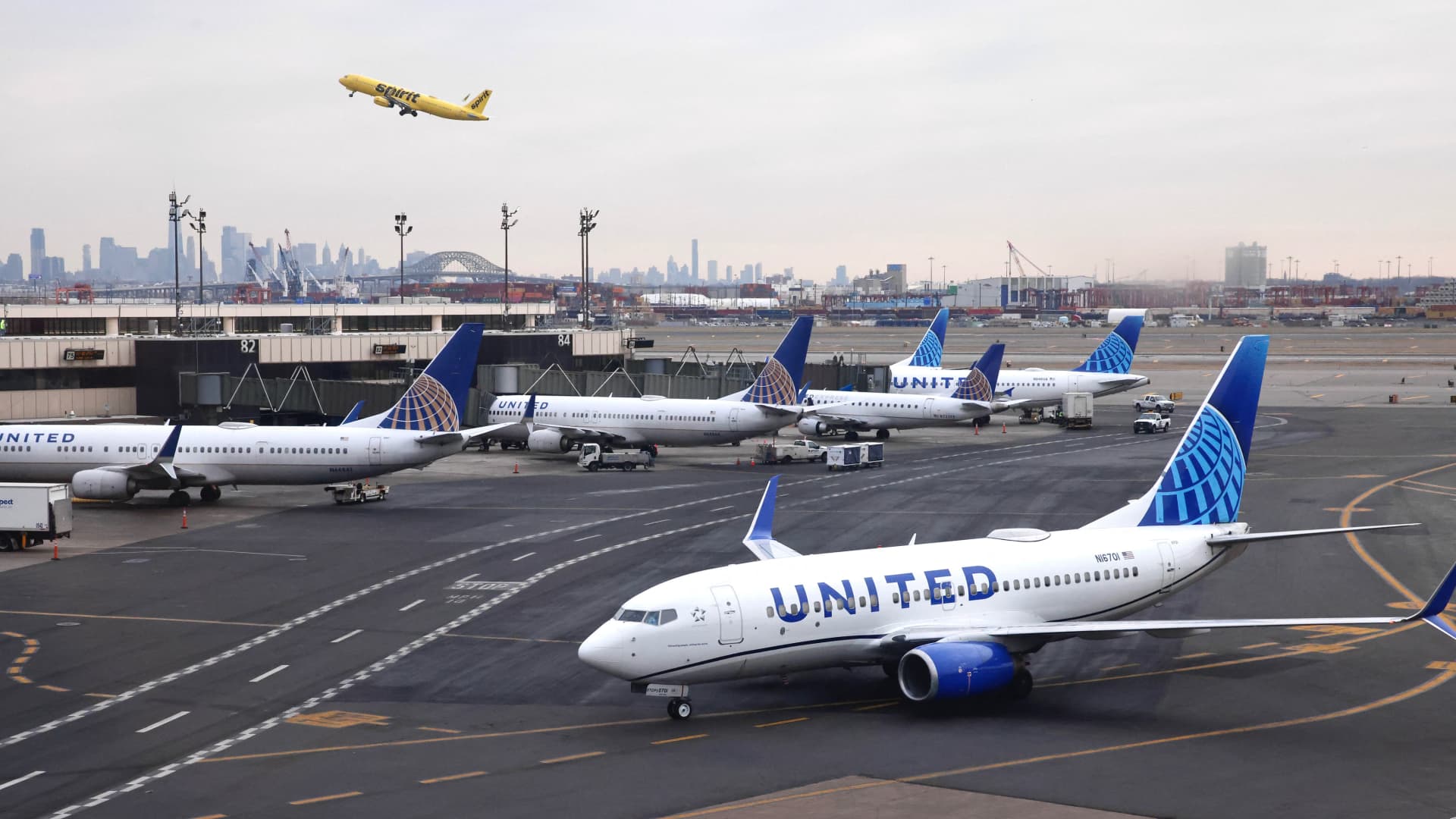NEWARK, New Jersey — Faced with congested airports, rising costs, a pilot shortage and a resurgence in travel demand, airlines are increasingly turning to the same remedy: bigger planes that fit more passengers.
Flights operated by the 11 largest U.S. airlines had an average of more than 153 seats on domestic flights last year, up from an average of nearly 141 seats in 2017, according to aviation data firm Cirium. In April, U.S. carriers have 0.6% more seats in their domestic schedules compared with the same month of 2019, despite operating 10.6% fewer flights.
The trend toward larger planes, part of a strategy known in the industry as “upgauging,” means airlines can sell more seats on each flight and make do with fewer planes, which are in short supply. While more passengers per plane drive down an airline’s unit costs, it means fewer flight options for consumers.
For example, United Airlines said its flights have 20 more seats per departure in its full network than in 2019.
Rodney Cox, United’s vice president of airport operations at the carrier’s hub at Newark Liberty International Airport, told CNBC last month that it’s difficult to increase the number of flights operated into and out of the airport, one of the nation’s most congested.
“The way we continue to grow our model and grow the business is to upgauge our flights,” he said.
Last month, United said it would fly about 3,600 domestic routes using wide-body aircraft. The airline also devoted 777s, the largest plane in its fleet with 364 seats, to fly between major hubs and Orlando, Florida, during spring break, a spokeswoman said.
Early in the Covid pandemic, U.S. airlines reassigned their largest jets for domestic routes when international travel was hobbled by the crisis and travel restrictions. Now that international trips are picking back up, the competition for those planes has gotten tighter.
And, Cox noted, there are limits to how many flights the airline can upgauge, especially with its largest planes.
“Not every gate is equal,” he said. “You can’t put a wide-body [airplane] on every single gate.”
Avoiding disruptions
The trend toward larger planes is taking on increased importance during what airline executives expect to be a busy spring and summer with shortages of pilots, air traffic controllers and new aircraft.
Keeping the operation running smoothly at crowded Newark is key, United vice president Cox said. If planes don’t take off fast enough on schedule, because of limited numbers of gates “you’ll see it turns into a parking lot,” he said.
Airlines and federal officials have agreed to trim flights in hopes of avoiding a repeat this summer of flight cuts and schedule delays in busy airports serving New York and Washington, D.C.
Last month, the Federal Aviation Administration said it would allow airlines to cut flights at airports serving New York City and at Washington’s Reagan National Airport as a means to avoid disruptions.
American Airlines said that in response to the FAA’s slot waiver it will temporarily reduce frequencies on select routes from LaGuardia Airport and Newark this summer.
“We’re proactively reaching out to affected customers to offer alternate travel arrangements,” a spokeswoman said. The airline is planning to reallocate aircraft from reduced frequencies to routes at its hubs at Dallas Fort/Worth International Airport, Chicago O’Hare and Philadelphia International Airport.
United Airlines and Delta Air Lines have told the FAA they also intend to seek waivers that would allow them to reduce flights.
The FAA said it expects “airlines to take actions minimizing impacts on passengers, including operating larger aircraft to transport more passengers and making sure passengers are fully informed about any possible disruptions.”
Some airlines are challenged to switch to larger planes, though. JetBlue Airways, for example, operates all narrow-body jets.
“We don’t have a 70-seater we could turn into a 150[-seater],” JetBlue CEO Robin Hayes told CNBC last week. “And even the airlines that do, you’re just taking seats out from somewhere else.”
Plus, the airline doesn’t contract regional carriers for many of its flights like larger U.S. airlines do.
“This is going to have a very significant financial impact on JetBlue and our customers,” Hayes said of the reduced capacity. “It’s always the smaller communities that take the disproportionate impact on this.”
Reducing regional
To help increase passengers per plane, United and other network carriers are also decreasing their reliance on regional feeder airlines, where the pilot shortage is most acute and unit costs are high.
Delta said 70% of its domestic flights this year are operated by the mainline airline, up from 55% in 2019. Seats per departure are up 15 from 2019, a spokesman told CNBC.
Delta has also shifted from regional jets to mainline planes like Airbus A320s and Boeing 737s on traditional business routes like Boston to Chicago, Seattle to San Francisco and Los Angeles to Las Vegas. It has eliminated regional jets in Las Vegas, Houston, Dallas/Fort Worth and San Antonio, Texas, altogether, replacing them with larger planes, a spokesman said.
Some major airlines have halted service to some small airports, citing a shortage of pilots at regional airlines. American last year left cities including Dubuque, Iowa, and United most recently said it would stop flying to Erie, Pennsylvania, in June. Delta also said it will temporarily stop service to State College, Pennsylvania, and to La Crosse, Wisconsin that month.
Reducing regional flights in lieu of mainline flights “could cut departure options in half for travelers, meaning long layovers and higher trip time and cost burdens, but it also could mean one city previously served can’t be served any longer,” said Faye Malarkey Black, president and CEO of the Regional Airline Association.
“This is one more harm for small communities who don’t have the passengers to fill larger planes,” she said.
— CNBC’s Gabriel Cortes contributed to this article.
